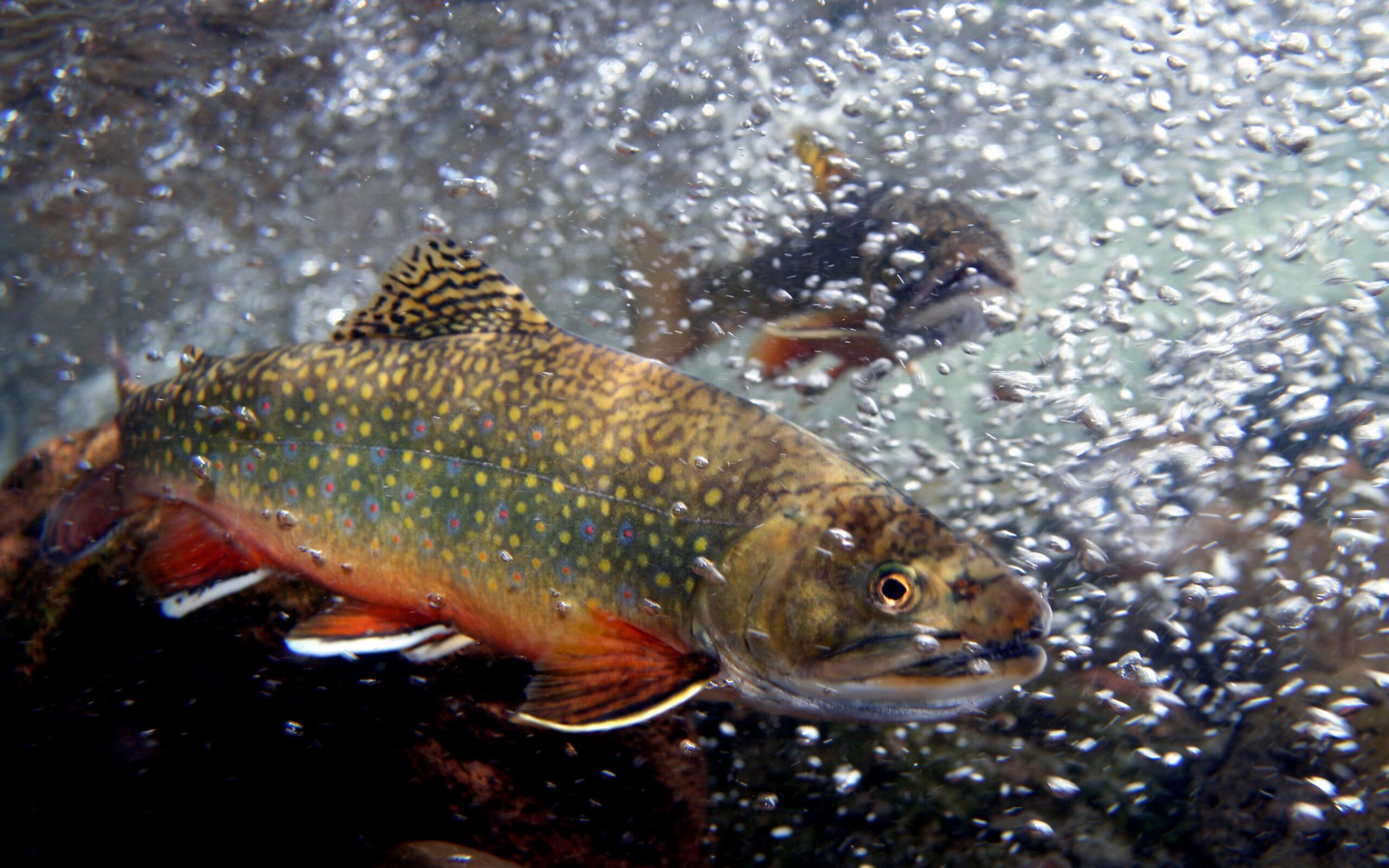
On Wednesday night, anglers and fisheries personnel gathered in Augusta for the first of two informational meetings that may help change the way people think about brook trout management in the northern section of Maine.
At that meeting, officials from the Maine Department of Inland Fisheries and Wildlife explained why they’re considering changing the “general law” for that North Zone to prohibit the use of live fish as bait. Live fish could still be used on waters where a special code amends the general law requirement.
Today, the general law statewide — that is, the rules that govern a basic water with no special protection needed — allows for live fish as bait.
Last week, I reached out to Francis Brautigam, the DIF&W’s fisheries and hatcheries director, to pick his brain about the new strategy, which will be the subject of another public informational meeting Dec. 19 from 6:30 p.m. until 8:30 p.m. in Ashland.
Brautigam said the department was spurred into action by the Legislature, when pending bills looked to change the way that the state’s “Heritage Waters,” which hold wild or native trout, were managed and nominated for special regulations.
“We had advocated at that time to look a little bit more broadly in scope at protecting native brook trout fisheries by looking at waters where people are likely — more likely — to use live fish as bait, such as larger river systems,” Brautigam said.
The Legislature made it clear that there was a desire to enhance protection for brook trout, Brautigam said; one tactic often used in cases like that is to prohibit the use of live fish as bait.
“Specifically, they were very concerned about introducing new species of fish. Certainly what we think of is non-native predators like bass and pike and muskellunge,” Brautigam said. “But there were also concerns too about introducing other species of fish that may not outright replace brook trout, but certainly can, and do, compete with brook trout.”
But rather than addressing the problem in a piecemeal fashion, Brautigam said it remained important to stick to a department priority that had been in place for several years: Strive to make the fishing lawbook simpler, not more complicated.
“We were really sensitive to trying to move in a way that was not going to cause a collapse in our bait industry, was not going to cause a collapse and cause concern among anglers in terms of not being able to use traditional fishing methods, and was not going to complicate our lawbook,” Brautigam said.
While there’s much talk about the “Two Maines” when it comes to economic prosperity, there are also two Maines when it comes to fish. In the South Zone, for instance, there are plenty of places where non-native fish like bass are prevalent, and Brautigam said that the species is now the second-most popular among anglers.
But in the other Maine — the North Zone — brook trout remain king, and the resource that exists there is unique to the lower 48 states.
Therefore, it was important to send a message to the state’s anglers: Brook trout matter.
“We’re really trying to set the stage and get people to rethink how they think about fishing and the resources that they have in the northern part of our state. They are resources that make our state truly unique when you look around the country,” Brautigam said.
That means that in the North Zone, live fish would still be allowed as bait on specific “traditional” waters, but the general law would prohibit it.
That would be a largely ceremonial change, but one that would simplify the lawbook, and stress the state’s priorities.
“We’ve pretty much drawn a line in the sand, and we’re saying, ‘We’re going to actively manage the bass in the [southern] part of the state where they’re well-established, where there’s already been a displacement of native populations, [where trout] are already disturbed,” Brautigam said. “But hey, we’ve still got a big part of the state that’s still healthy, it’s still intact [as trout habitat]. We can make more of a concerted effort to keep it that way. That’s kind of what this is about.”
And that should be something that anglers should embrace moving forward.
John Holyoke can be reached at jholyoke@bangordailynews.com or 990-8214. Follow him on Twitter: @JohnHolyoke




